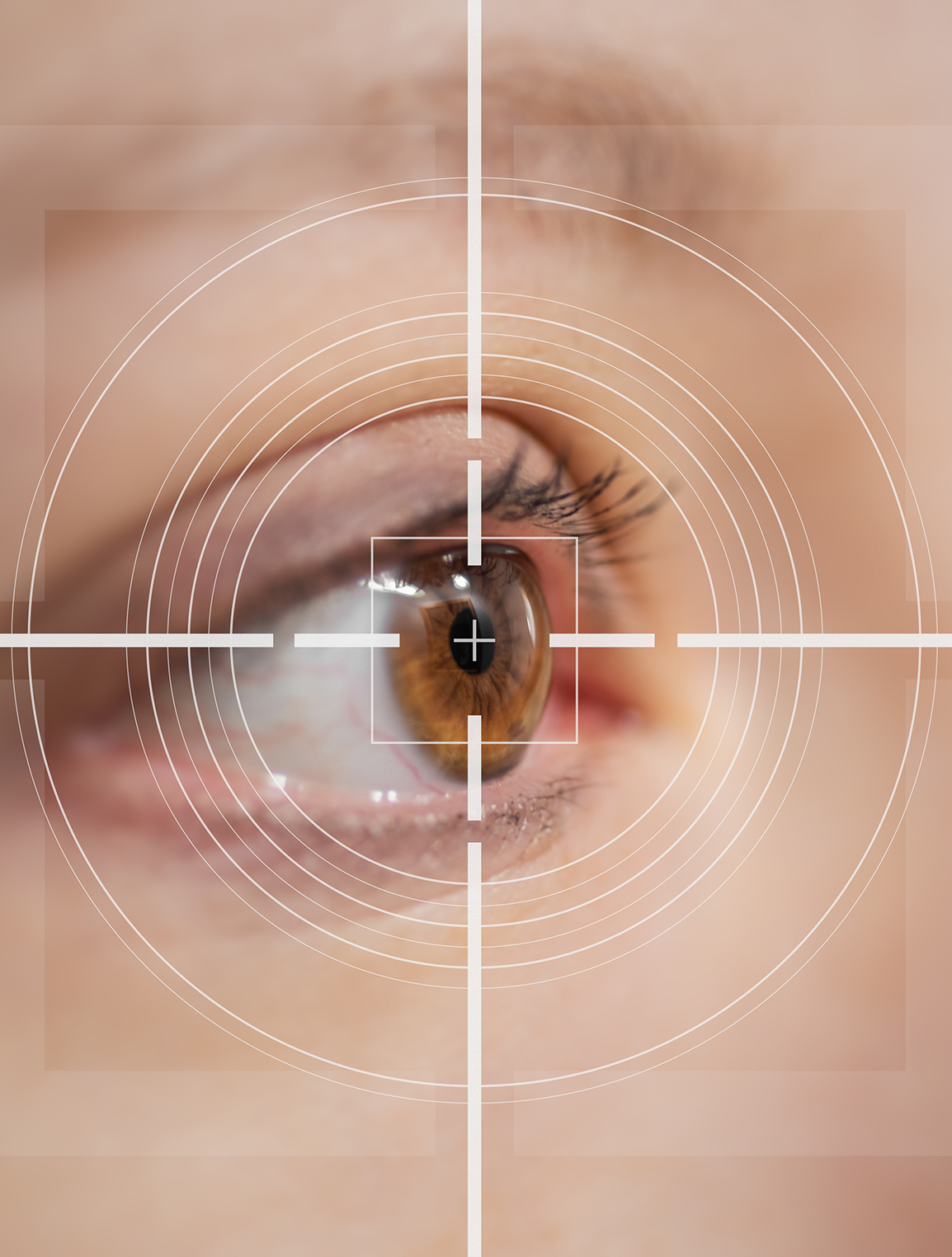LASIK Eye Surgery
Clear Vision, No Glasses. Experience the Freedom of Bladeless LASIK

What is LASIK?
LASIK laser surgery corrects vision problems during a quick in-office appointment. The elective procedure allows many people to forgo the need for glasses or contacts. If you’re at least 18 years old and have had stable vision for at least the past year, you may be a prime candidate. Richard E. Levine, MD refractive cataract and LASIK specialist is pleased to provide LASIK to patients. To book a free consultation, call Cliffside Laser Eye and Cataract Center, or use the convenient online scheduler.
The LASIK Procedure
Bladeless LASIK is the most common type of vision correction surgery that we perform. LASIK Eye Surgery is a method of corneal laser eye surgery that we can use to correct nearsightedness, farsightedness and astigmatism with a quick visual recovery and minimal discomfort.
At the Cliffside Eye Center, Dr. Levine performs LASIK Eye Surgery using an advanced procedure called Bladeless or Blade Free All Laser LASIK during which the LASIK “flap” is created using a femtosecond laser. His specialized corneal training, experience and expertise in performing corneal surgery such as LASIK, offers patients an added sense of confidence in the safety, efficacy and predictability of having their vision correction procedure.

What to Expect During Your LASIK Procedure
To begin your LASIK procedure, the staff places a few eye drops in your eyes to numb the surface of your eye in order to make your treatment quite comfortable. You will be seated in a comfortable and relaxed waiting area while the drops have a chance to begin working. A staff member will escort you into the Excimer Laser Suite and help you to position yourself comfortably on the moveable “bedlike” area that is actually part of the laser system.
Bladeless LASIK: A Three-Step Process
Step 01
Creating the Flap
The first step involves using a femtosecond laser to create a thin, precise flap on the cornea. This ensures that your LASIK procedure is completely bladeless and performed using advanced all-laser technology.
Step 02
Reshaping the Cornea
Next, we carefully fold back the flap to expose the inner layer of the cornea. The Excimer Laser is then applied to reshape the cornea, correcting your vision. This laser treatment is quick and painless, typically lasting between 2 to 15 seconds, depending on the level of correction needed.
Step 03
Flap Repositioning
In the final step, the corneal flap is gently placed back into its original position, where it naturally adheres without the need for sutures or stitches. Most patients find the procedure surprisingly comfortable and are amazed at how quickly it is completed.
What to Expect After Your LASIK Procedure
LASIK permits the healing and visual recovery process to be quick and predictable for most patients. For a few days after your LASIK Eye Surgery, you will need to be careful not to rub or bump your eyes. It is expected that you will have a mild “sandy” or “gritty” sensation during the first day or so after your LASIK surgery. We will give you complete instructions regarding eye drops and medications to use to help the healing and visual recovery process.
YOU NEED TO FOLLOW THESE INSTRUCTIONS CAREFULLY!
It is important and required to schedule follow-up visits to check the healing process, regardless of how well you think you are doing. Most LASIK patients at the Cliffside Eye Center are able to pass the New Jersey Motor Vehicles Eye Test (NJMVT without eyeglasses or contacts within a day or so after their LASIK Surgery.
You should feel free to discuss any fears, concerns, questions or thoughts about LASIK or any corneal laser eye surgery with our surgeons or the staff. Some of our staff have had the LASIK procedure themselves. Our staff is available to answer any questions or to address any needs you may have regarding Laser Vision Correction. We will be pleased to spend whatever time is necessary to review any information about the LASIK procedure, what to expect on LASIK surgery day, follow-up care, fees and affordable “no money down” easy monthly payment plans that will fit into your budget.


LASIK – OUR EQUIPMENT
Why is the Allegretto Laser better than any other laser on the market?
Most telling of all is:
Most telling of all is:
Are you a Good Candidate for LASIK?
If you answered yes to these questions, you’re not alone; millions of people in the US suffer from visual disorders that can be treated. That’s right—clear vision with reduced or no dependence on glasses and contact lenses is an option!
We offer our patients the most advanced options for vision correction, including blade-free/all-laser LASIK. Most who struggle with glasses and contact lenses have heard about vision correction procedures such as LASIK. LASIK laser vision correction continues to grow in popularity, and with good reason. Millions have undergone LASIK with amazing results.
Dr. Levine has an excellent track record of helping LASIK surgery patients greatly reduce—or completely eliminate—their need for eyeglasses and contact lenses!
There have been many advances in LASIK surgery in recent years. However, the goal has remained the same: LASIK surgery aims to permanently correct refractive error, eliminating or reducing dependency on eyeglasses as much as possible. The OCLI Vision LASIK surgeons take great pride in offering the latest advancements in LASIK technology by using the AMO (Advanced Medical Optics) iLASIK platform, as well as the Wavelight Laser.

LASIK FAQs
Read Our Articles For More Insight On LASIK
7 Laser Eye Surgery Myths and Facts You Should Know
Are you considering laser eye surgery, but feeling hesitant [...]
Is Laser Eye Surgery the Right Choice for You?
Remember the last time you fumbled for your glasses in [...]
What is Custom LASIK?
100% Blade Free All Laser LASIK Laser Vision Correction [...]




